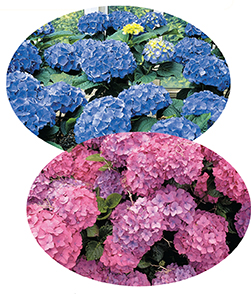Quick Lab
Using an Indicator
Materials
one quarter cup of frozen blueberries, foam cup, spoon, 4 small plastic cups, 2 dropper pipets, lemon juice, white vinegar, window cleaner, baking soda
Procedure 
Place the blueberries in the foam cup and mash them with the spoon. Try to get as much juice out of the berries as possible. You will use the juice as an indicator.
Use the spoon to remove most of the crushed berries and discard them as directed by your teacher. Leave as much juice behind as possible.
Use a dropper pipet to place a few drops of lemon juice (which is acidic) in one of the plastic cups. Use a second pipet to add one drop of your indicator to the lemon juice. Swirl the cup. Record your observations.
Rinse out the pipets with water. Repeat Step 3, using vinegar and then window cleaner in place of lemon juice. Record your observations.
Place several drops of the indicator in the last plastic cup. Add a small pinch of baking soda to the cup. Swirl the cup. Record your observations.
Analyze and Conclude
Classifying Use your observations to determine how the color of blueberry juice changes in acids and bases.
Drawing Conclusions How does the blueberry indicator help you determine whether a material is an acid or a base?
Inferring Why does the color of the blueberry indicator change less when added to acids than when added to bases?
Color Changes in Indicators
Bases turn red litmus paper blue. The litmus paper will change back to red if you drop an acidic solution on it.
Phenolphthalein (fee nol THAY leen) is another example of an acid-base indicator. In a solution containing a base, phenolphthalein is red. In a solution containing an acid, phenolphthalein is colorless.
Some flowers, like the hydrangeas shown in Figure 18, contain natural indicators. The color of the flowers depends on whether the plant is growing in acidic or basic soil. When hydrangeas grow in acidic soil, the flowers are bluish-purple. When hydrangeas grow in basic soil, the flowers are pink. By manipulating the acidity of the soil, gardeners can determine the color of the flowers.

What color does litmus paper turn in a base?
Figure 18 Soil acidity can affect the color of flowers such as hydrangeas.





